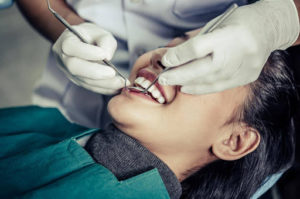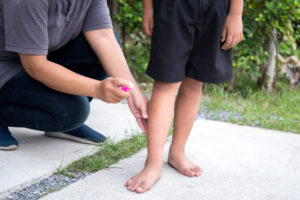Tiny fluffy dogs are the epitome of adorable, but their delicate stature often comes with its own set of health considerations-particularly regarding their skin. Skin diseases can be an unpleasant reality that many small dog owners face, and being proactive about spotting and treating these conditions is essential for your pet’s well-being.
This comprehensive guide will look at common skin diseases affecting a tiny fluffy dog and the best action to manage and alleviate these issues.
Recognizing the Signs of Skin Disease
Before addressing the issue, it’s crucial to understand what to look out for regarding symptoms. Here are some common signs that your small dog may be suffering from a skin condition:
Constant Itching or Scratching
A tiny fluffy dog with an irresistible coat can be a magnet for cuddles, but if your pup is constantly scratching or licking themselves, it could be due to a skin issue. If you notice your dog excessively grooming themselves, it’s worth looking closer at their skin.
Constant itching or scratching can indicate allergies, parasites, or skin infections. If this behavior persists for over a few days, it’s best to consult your veterinarian.
Redness or Inflammation
Redness and inflammation are tell-tale signs of irritation or infection on a fur baby’s skin. If you notice your dog’s skin looking redder than usual or see any swelling or heat emanating from a particular area, it could be due to an allergic reaction or bacterial infection.
Redness is important. It can come with symptoms like hair loss, scabs, or pus-filled bumps.
You must seek professional help for proper diagnosis and treatment. Redness and inflammation can also indicate an underlying health condition, so it’s essential not to ignore these signs.
Excessive Dryness or Flakiness
A tiny fluffy dog that typically accumulates dry flakes of skin in their coat may have a condition known as seborrhea. This is a chronic skin disease that can result from a variety of factors, including hormonal imbalances, allergies, and parasites.
Dogs who typically accumulate dry flakes can also show a hidden lack of nutrients. So, you must ask your vet for a proper diagnosis and treatment. Ignoring this condition can lead to secondary infections and severe discomfort for your pet.
Hair Loss or Bald Spots
Small dogs with thin fur are more prone to hair loss than other breeds. However, if you notice your pup losing patches of hair or developing bald spots, it could be a sign of an underlying skin disease. Allergies, parasites, and hormonal imbalances are common causes of hair loss in dogs.
If you notice your dog’s coat thinning or unusual bald spots, you must visit the veterinarian for proper diagnosis and treatment. Finding the condition early can stop it from getting worse.
Managing and Treating Skin Diseases
Once you’ve identified the signs of skin disease in your small dog, the next step is to take the necessary steps to manage and treat the condition. Here are some tips to help your furry friend on the road to recovery:
Consult with Your Veterinarian
It’s crucial to seek professional help when dealing with skin diseases in small dogs. An expert veterinarian can diagnose the cause of your dog’s symptoms. They can then recommend a treatment plan.
Some skin conditions can be managed with topical treatments, while others may require medication or a change in diet. Following your veterinarian’s instructions and monitoring your dog’s progress closely is essential. They can check skin problems and help identify any underlying health issues contributing to the skin disease.
Keep Your Dog Clean and Hydrated
Regular grooming is essential for maintaining the excellent skin health of a tiny fluffy dog. This includes bathing, brushing, and keeping their coat clean and free of tangles and mats. A clean coat can prevent bacteria and parasites from thriving and causing skin irritation.
Additionally, it’s crucial to ensure your dog stays hydrated by constantly providing fresh water. Dehydration can lead to dry, flaky skin, so make sure your pup has access to water throughout the day. This is especially important during hot summer when dogs may be more prone to heat-induced skin problems.
Be Mindful of Allergens
Allergies can be a common cause of skin diseases in small dogs. Pay attention to potential allergens in your dog’s environment, such as pollen, dust, and certain foods. If you suspect your dog has allergies, consult your veterinarian for proper diagnosis and management.
You may also need to change their diet or lifestyle to cut exposure to allergens. This may involve using hypoallergenic products for bathing and grooming. You should keep your home clean and avoid certain foods that may trigger an allergic reaction.
Seek Specialized Dermatological Treatments
Your veterinarian may refer you to a veterinary dermatologist for persistent or severe skin conditions. These specialists can offer advanced treatments.
These include allergy testing, immunotherapy, and more specific drugs. These drugs might not be available in general practice.
Allergy testing can find the triggers causing your pet’s discomfort. It allows for a tailored approach to avoiding or treating them.
Allergy shots, also called immunotherapy, can gradually desensitize your dog’s immune system to these allergens. This can reduce the severity of reactions over time.
Implement a Specialized Diet
Nutrition plays a critical role in skin health. Some skin conditions can improve with a diet tailored to your dog’s needs. Your vet might recommend a special diet. It has omega-3 and omega-6 fatty acids. These acids promote healthy skin and coat.
Hypoallergenic diets remove common food allergens. They can also help dogs with food sensitivities.
Always consult your vet before making significant changes to your dog’s diet. This ensures it meets all their nutritional needs.
Maintain a Stress-Free Environment
Stress can exacerbate the skin conditions of a tiny fluffy dog, making it essential to maintain a calm and stable environment. Regular exercise, playtime, and positive reinforcement can help keep your dog happy and reduce stress.
Additionally, consider using pheromone diffusers or calming supplements recommended by your veterinarian to help manage anxiety, especially in dogs that are prone to stress-related skin issues. This approach can help alleviate discomfort and promote faster healing.
Keeping Your Tiny Fluffy Dog Healthy
Skin diseases of a tiny fluffy dog are not uncommon, but they can be effectively managed and treated with proper care. Consulting with your veterinarian can help your furry friend live a comfortable and healthy life. Keep an eye on your dog’s skin health and make necessary changes to ensure they are happy, itch-free, and enjoying all the cuddles they deserve!
Be sure to check our website and read more.





Be First to Comment